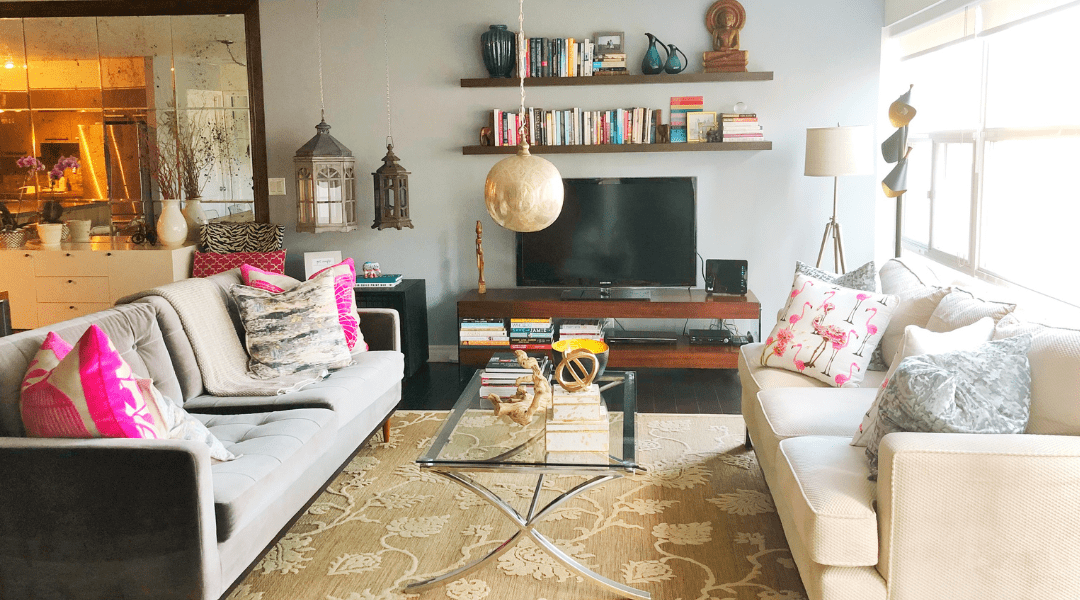The cover photo of this post? That was my living room a few years ago.
I was so in love with that grey sofa when it arrived. I loved it the minute I saw it in the store—clean lines, great color, super comfy. And in my head, I had this vision of two sofas facing each other, creating the perfect spot to host friends and family for cozy conversations and endless dinner parties.
Spoiler alert: those gatherings with family and friends didn’t exactly happen as often as I wanted.
But I digress. I really want to tell you about my hunt for that second sofa.
And if I’m being honest, by the time I got to the store on that day, I just wanted the decision done. You know that feeling? You’re busy, your brain is fried from too many choices, and you tell yourself—it’s fine, it’s neutral, it’ll work. So, I ordered a white sofa that I kinda liked. Not loved. But hey, it was classic… it would be fine.
Except it wasn’t.
That nagging feeling that maybe I should’ve waited? It stuck. And sure enough, about a year later, flipping through an EQ3 catalogue, there it was—the sofa I really wanted all along.
I share this because this is exactly how furniture regret happens. You rush, you settle, and then you live with a decision that quietly bugs you every time you walk into the room.
The good news? It’s totally avoidable. Let me show you how.
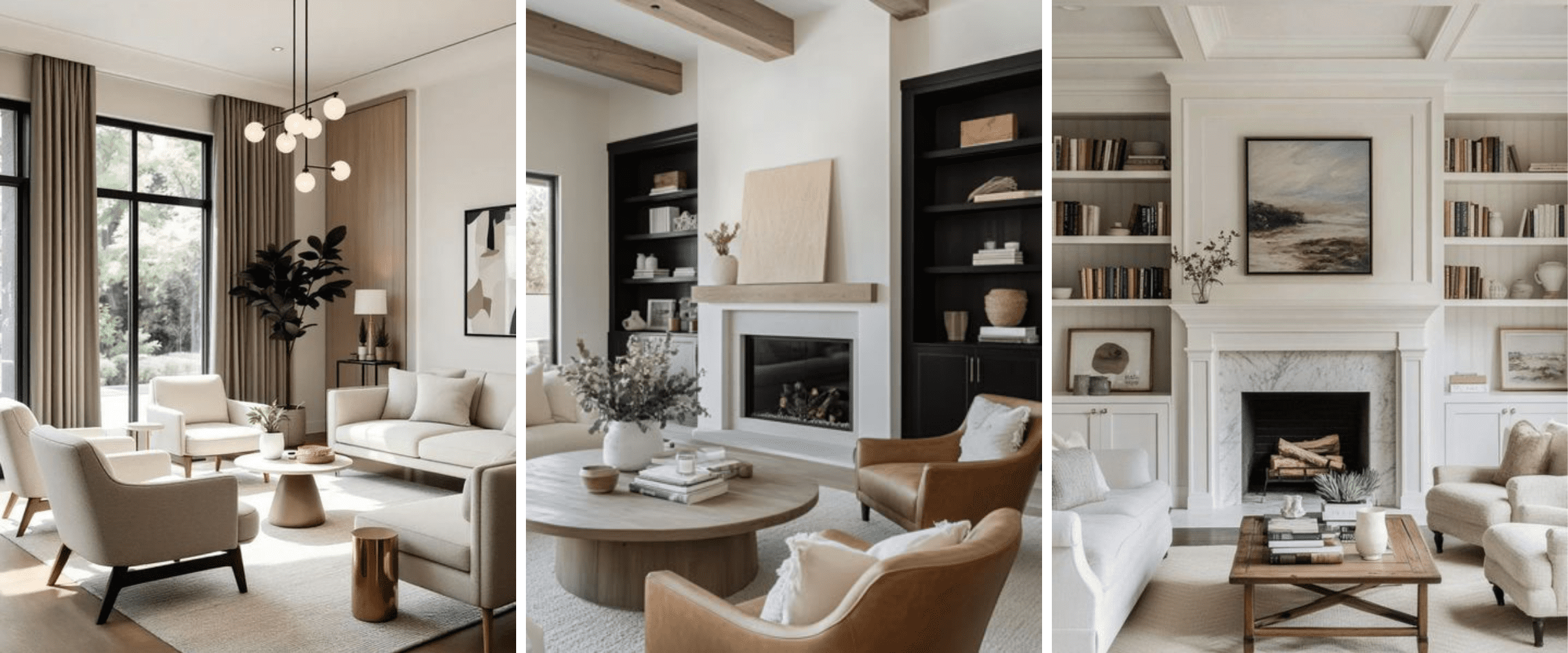
Images via Pinterest.
Why Does Furniture Regret Happen So Often?
If you’ve ever felt that little twinge of regret after buying a piece of furniture, you’re definitely not alone. It happens to so many homeowners—honestly, more than you’d think. And the kicker? It’s usually not because they bought the wrong piece. It’s because they rushed the decision or didn’t think through how that piece would really work in their home.
Here’s why this happens more often than not:
1. You’re Overwhelmed and Just Want the Decision Made
There’s so much choice out there—styles, sizes, colors, materials—and after a while, your brain just taps out. Decision fatigue is real. At that point, you’re no longer shopping for what you love… you’re just looking for the exit.
2. You Buy for the Room You Wish You Had, Not the One You Live In
We’ve all been there—scrolling Pinterest, dreaming about the perfect space where the kids never spill anything, the dog doesn’t jump on the sofa, and there’s always fresh flowers on the table. But the truth is, if the piece doesn’t work for your life and your space, you’re going to feel it… every single day.
3. You Forget About Scale and Size
The store makes everything look perfect—big open space, high ceilings, all the natural light. Then that gorgeous sectional shows up and suddenly, your living room feels like it shrank by half. Yikes.
4. You Buy What’s Trendy, Not What’s Timeless
Those curved, velvet, super-trendy pieces? Gorgeous… in a showroom or on Instagram. But trends change fast, and what felt exciting today might feel tired in a year or two.
5. You Skip the ‘Is This Comfortable?’ Test
You’d be surprised how many people fall in love with the look of a chair or sofa and forget to actually sit in it. Or worse—order it online without checking reviews. The result? Something you don’t actually want to sit on. That’s why we only recommend things on our shopping lists that we are sure our clients will love and be comfortable in.
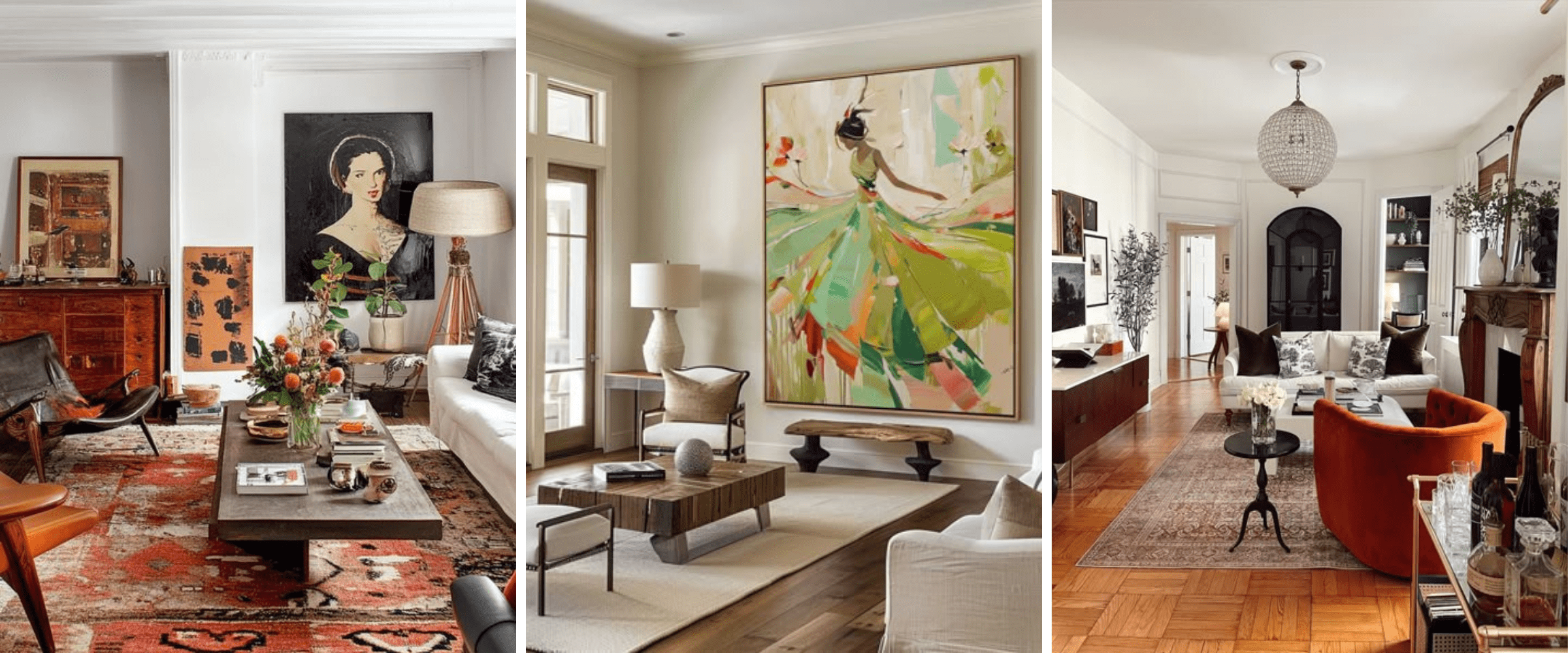
Images via Pinterest.
5 Common Mistakes People Make When Buying Furniture (and How to Avoid Them)
Mistake #1: Buying Based on Looks (and Only Looks)
We’ve all done it—fallen for a piece because it looked so good in the store or online. But the reality is, what works in a showroom doesn’t always work in your home.
That sleek white sofa? Gorgeous. Until your dog decides it’s his new nap spot. Or your toddler turns it into their personal snack zone.
How to avoid it:
Before you pull the trigger, ask yourself: Will this piece hold up in my daily life? Think about your lifestyle—pets, kids, how you actually use the room—and make sure what you’re buying looks good and works for the way you live.
Mistake #2: Ignoring Scale and Proportion
Showrooms are designed to make everything look perfect. Tons of space, great lighting… and suddenly, that coffee table you loved in the store feels more like a dining table, or the armchair you imagined being the perfect piece in your living room blocks half your window.
How to avoid it:
Measure your space—and then measure again. Don’t just think about the length and width of a piece—check the depth, the height, and the clearance around it. Can you walk around it easily? Does it block windows or doors? Grab painter’s tape and map it out if you need to.
Mistake #3: Forgetting About Comfort
It sounds obvious, but you’d be shocked how often comfort gets overlooked. You fall in love with a chair’s look, and before you know it, you’re living with something no one actually wants to sit on.
How to avoid it:
Test it out. Sit, lean back, imagine yourself using it every day. If you’re shopping online, dig into reviews—are people raving about comfort or complaining about sore backs? Don’t assume pretty means comfy.
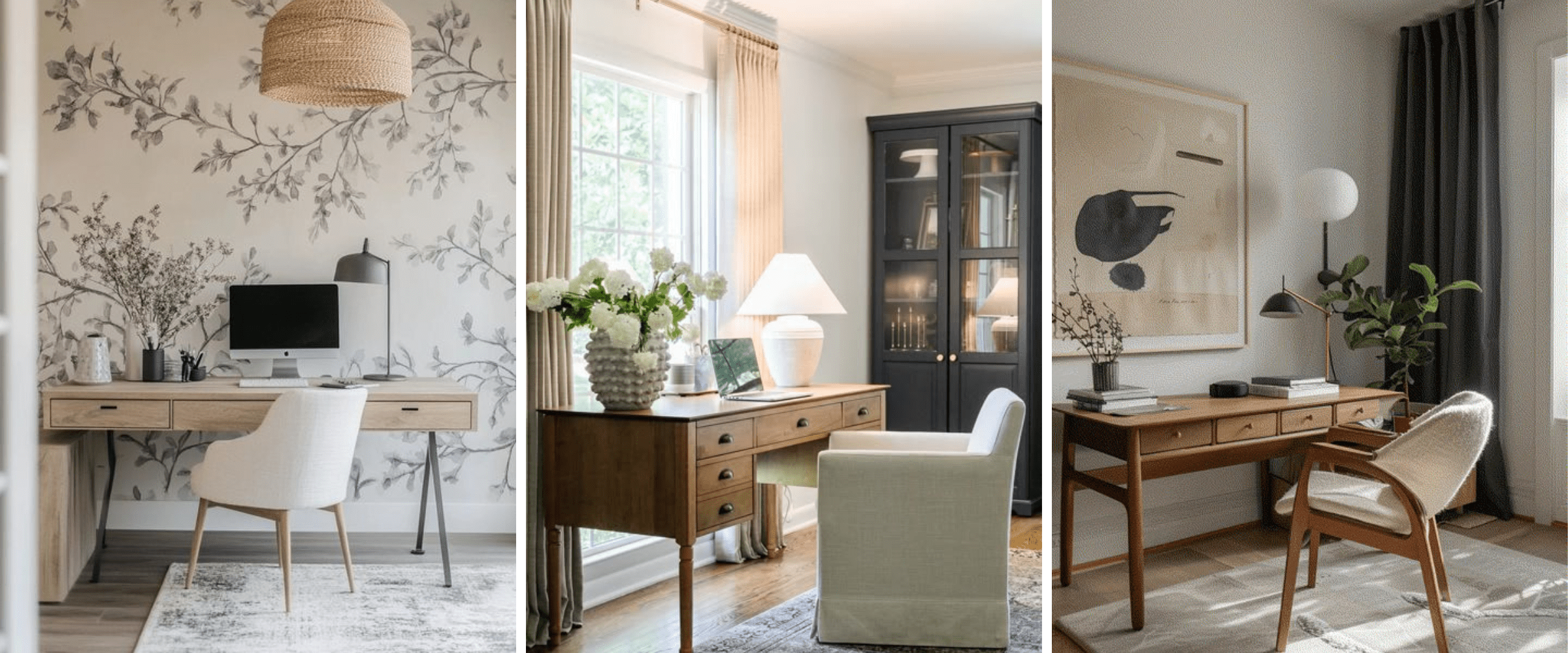
Images via Pinterest.
Mistake #4: Skipping the Quality Check
Furniture is one of those “you get what you pay for” situations. Cheap pieces might look great for a little while, but a year in? Sagging cushions, wobbly legs, chipped finishes.
How to avoid it:
Look under the hood—literally. Check what the frame is made of, how joints are constructed, and the quality of the fabric or leather. Solid wood frames, sturdy joinery, and durable materials are worth the investment.
Mistake #5: Letting Trends Drive the Purchase
It’s easy to get caught up in what’s trending. Those curved boucle chairs are everywhere right now. But will you still love that piece in five years?
How to avoid it:
Anchor your space with classic, timeless pieces for the big stuff—sofas, beds, dining tables. Play with trends in your smaller décor—pillows, art, lighting—things you can swap out when your tastes (or the trends) change.
Here’s the thing…
Every single one of these mistakes is easy to make. We’ve all been there. But the good news? Once you know what to watch for, shopping for furniture gets a whole lot easier—and a whole lot less stressful.
Up next, I’ll share exactly how to create a regret-proof shopping plan so you walk away with pieces you love—not just today, but for years to come.
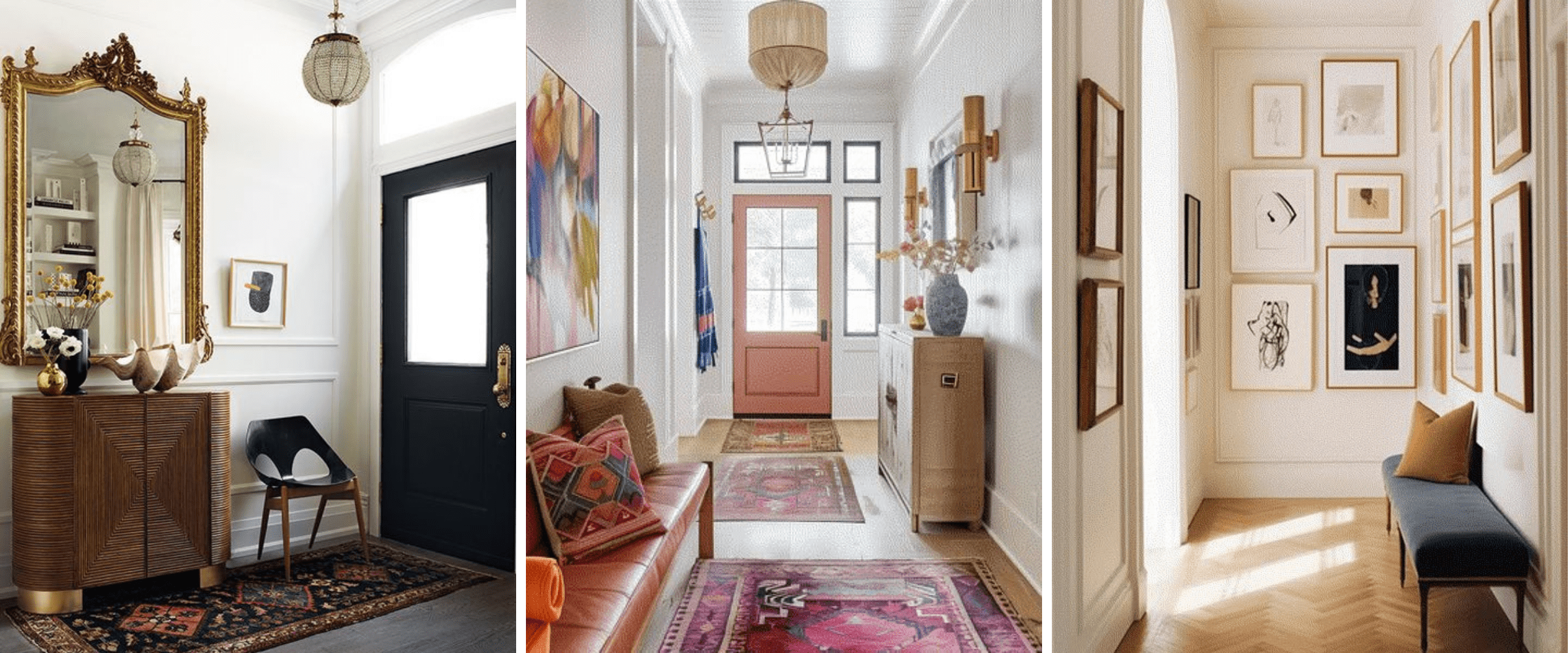
Images via Pinterest.
Your Regret-Proof Furniture Shopping Plan
Alright—now that we’ve talked about the mistakes, let’s get into what to do instead. Because when you slow down and follow a plan, you set yourself up to actually love what you bring home—not just for a few weeks, but for years.
Here’s your step-by-step plan to shop smarter and skip the regret:
Step 1: Start with a Plan, Not the Store
Before you even start browsing, get clear on how you want the room to function. Is this a formal living room for hosting? A family-friendly hangout spot? Knowing this upfront helps you prioritize comfort, materials, and the type of pieces you’ll need.
Pro tip: If you skip this, it’s way too easy to get swept up by what looks good instead of what works for you.
Step 2: Measure Everything (And I Mean Everything)
Grab your measuring tape. Measure the room. The walls. Doorways. Staircases. Hallways. Don’t forget ceiling height and window placement.
Then, think about how much space you actually have for each piece. A sofa that’s technically short enough might still feel massive if it’s too deep or visually heavy.
Pro tip: Use painter’s tape to mark out potential pieces on the floor—that visual is a game changer.
Step 3: Set a Realistic Budget (and Stick to It)
Furniture pricing can be all over the place—and it adds up fast. Set your total budget, then break it down by piece. Remember to factor in taxes, delivery fees, and any extras like assembly or protection plans.
Pro tip: Spend more on anchor pieces—sofas, beds, dining tables—and save on trendier or seasonal décor.
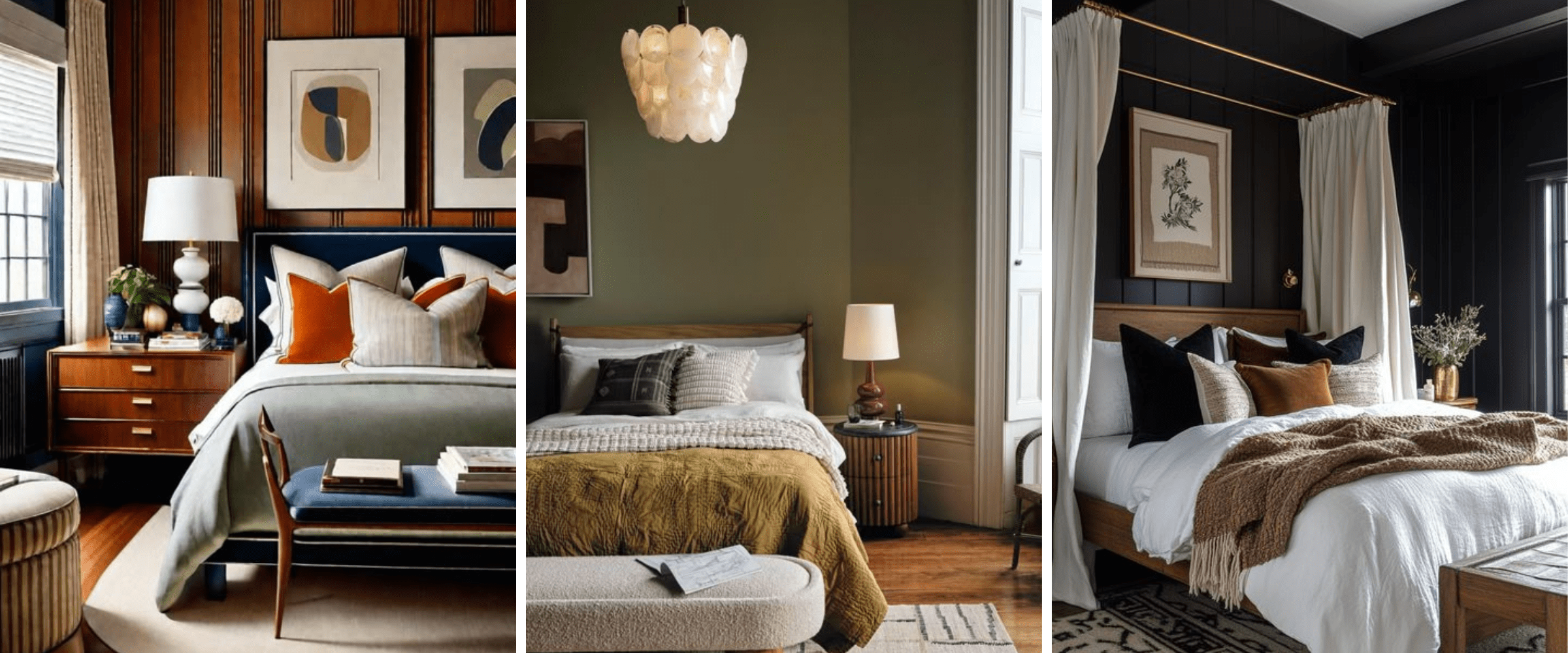
Images via Pinterest.
Step 4: Create a Mood Board or Vision Board
This doesn’t have to be fancy—grab images from Pinterest or snap pics of pieces you like. Seeing everything together helps you spot if something feels “off” before you buy.
Ask yourself:
- Do the colors work together?
- Does the style feel cohesive?
- Will this piece complement what I already own?
Pro tip: Canva is perfect for this and it’s free!
Step 5: Do a Material and Maintenance Check
That light linen chair is beautiful… but is it practical? What about pet hair, spills, or fading in sunlight?
Look into fabric durability, finishes, and how much maintenance is involved. If you’re going to be stressing about every fingerprint or wine spill, it’s probably not the right piece.
Step 6: Prioritize Comfort and Quality
Looks will only get you so far. Make sure the piece feels as good as it looks. If you’re shopping in person—sit on it, lie on it, imagine using it every day. If you’re shopping online, check reviews or better yet, find a showroom to test it first.
And check construction: solid wood frames, sturdy joints, durable fabrics. Those details make all the difference in how long something lasts.
Step 7: Think Long-Term—Not Just for Now
Trends come and go, but your investment pieces should have staying power. Before you buy, ask yourself: Will I still love this in five years?
If the answer’s no, it might be better as an accent piece instead of a major investment.
Following this plan slows the process down just enough so you can feel good about every decision—and avoid that nagging regret later.
Up next? I’ll walk you through exactly what to look for when it comes to quality—and what’s worth skipping. Because trust me, not all furniture is built the same.
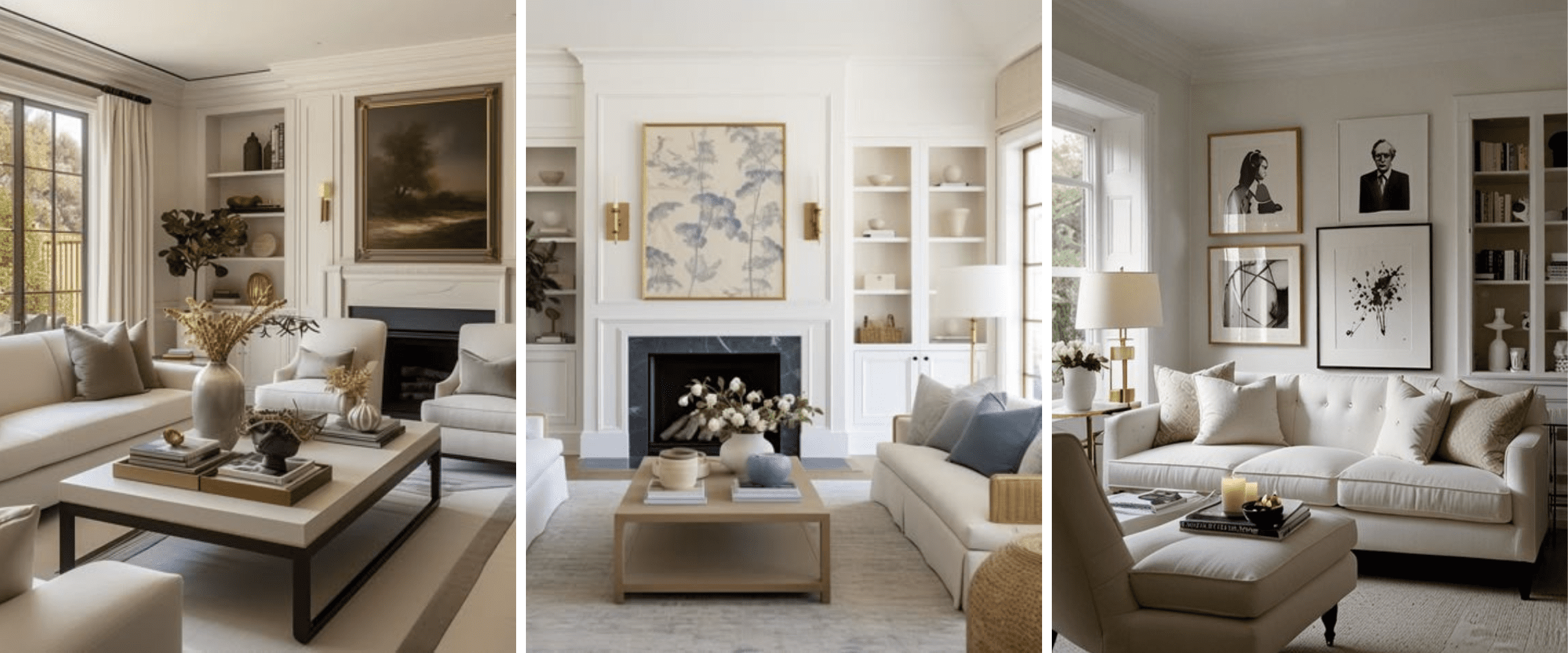
Images via Pinterest.
What to Look for in Quality Furniture (and What to Skip)
Let’s be honest—furniture can get expensive. And when you’re spending that kind of money, you want to know it’s going to last. Unfortunately, not all furniture is created equal. Some pieces look great but start falling apart faster than you can say “assembly required.”
Here’s what to check before you buy:
Frame and Construction Matter (More Than You Think)
The frame is the backbone of your furniture—if it’s weak, the whole piece is going to feel flimsy fast.
Look for:
✅ Solid wood frames (like hardwood, not particleboard)
✅ Kiln-dried wood for added strength
✅ Joints that are glued, dowelled, and screwed—not just stapled
Skip:
❌ Pieces made entirely of MDF or particleboard if it’s a high-use item
❌ Anything that wobbles or creaks when you test it
Cushion Fill and Support
That sofa might feel plush in the store, but what happens after six months? Are the cushions going to pancake?
Look for:
✅ High-resiliency foam wrapped in down or fiber
✅ Supportive webbing or sinuous springs underneath for structure
Skip:
❌ Cheap foam that flattens fast
❌ No support system (hello sagging seats)
Fabric and Material Durability
Fabric choice is huge—especially if your piece is going in a high-traffic area or if you have pets or kids.
Look for:
✅ Performance fabrics (stain-resistant, easy to clean)
✅ Tight weaves that resist snagging
✅ Leather? Go for full-grain or top-grain
Skip:
❌ Super delicate fabrics like silk or light linens (unless it’s in a low-use space)
❌ Fabrics with loose weaves that catch easily
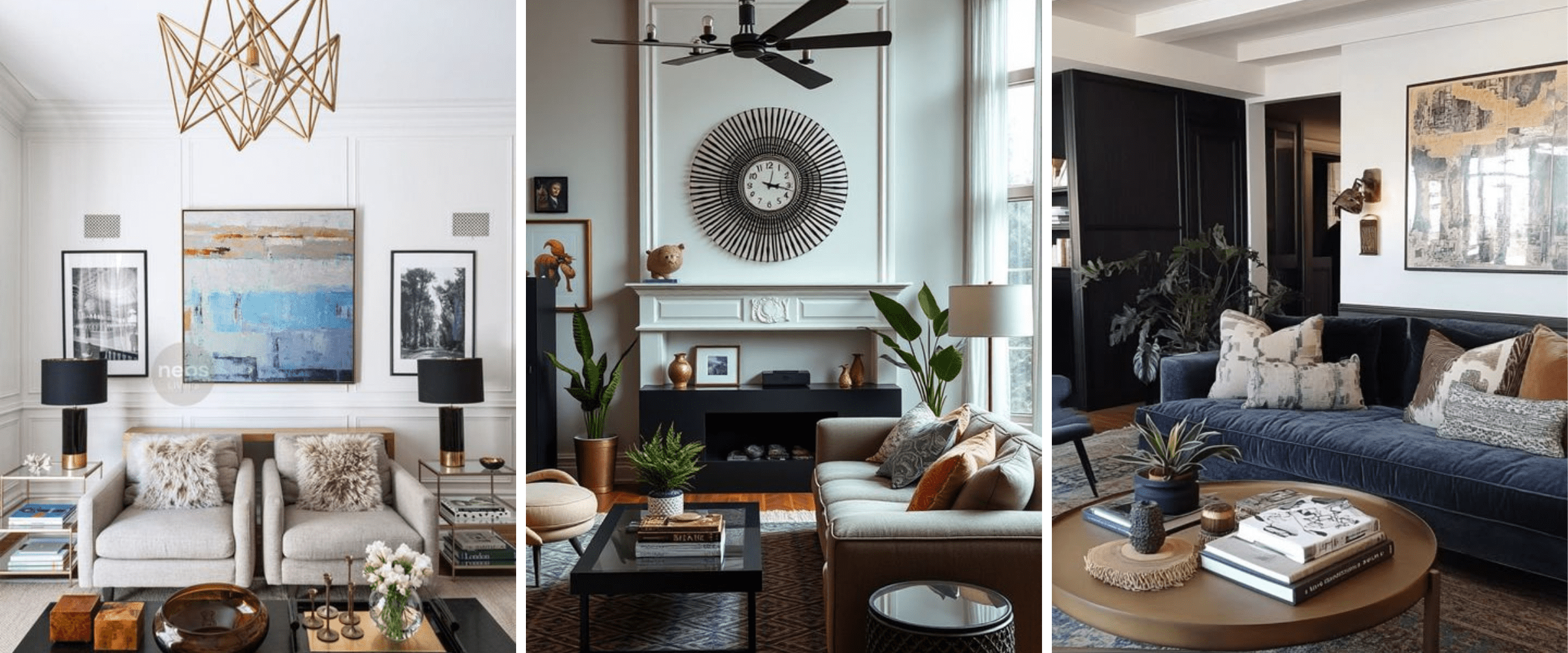
Images via Pinterest.
Finishes and Hardware
Drawers that stick. Handles that feel flimsy. Finishes that scratch if you look at them wrong. It’s the little details that end up driving you crazy.
Look for:
✅ Smooth drawer glides and soft-close if possible
✅ Metal hardware that feels solid (not plastic)
✅ Durable finishes that won’t chip or scratch easily
Skip:
❌ Flimsy hardware
❌ Cheap veneers that peel over time
Warranty or Return Policy
Good manufacturers stand by their quality. If there’s no warranty or a terrible return policy? That’s a red flag.
Bottom line: When in doubt, invest in quality where it counts—your sofa, bed, and dining table. These are your daily-use, live-with-it-for-years kind of pieces. Save the bargain hunting for trendier items you can swap out later.
Want a little secret? Sometimes the smartest move is bringing in a pro before you hit “buy.” I’ll share why in the next section.
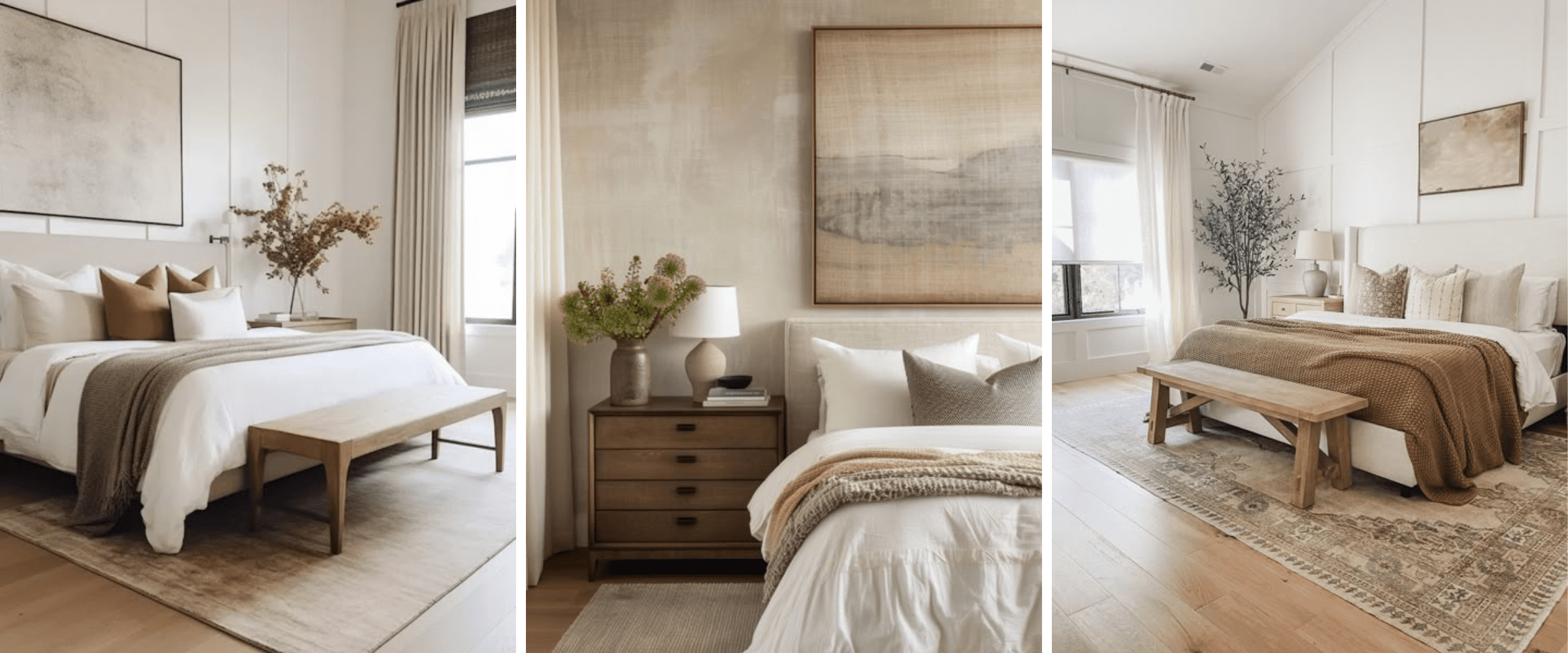
Images via Pinterest.
Bonus Tip
Here’s the thing no one tells you when you’re furniture shopping—sometimes the best money you can spend isn’t on the furniture itself… it’s on getting the right advice before you buy.
Because when you think about it, a designer’s job is to save you from costly mistakes. And trust me, those mistakes can add up fast—like ordering a sectional that doesn’t fit through the front door (yes, that’s happened), or realizing after the fact that your new dining chairs are too tall for your table.
Here’s what working with a designer gets you:
✔️ A solid plan before you start shopping
✔️ Space planning and scale checks so everything fits and flows
✔️ Expert guidance on materials and quality (what’s worth the splurge and what’s not)
✔️ A cohesive look that pulls everything together beautifully
✔️ Confidence to make decisions faster—without second-guessing every choice
One of the biggest things I hear from clients is, “I just want someone to tell me what works and what doesn’t.”
That’s exactly what we do with our Makeover Magic service. You get personalized advice tailored to your space, your style, and your lifestyle—so you can skip the overwhelm and the regret.
Because at the end of the day, you deserve to walk into your home and love what you see—without that nagging little voice wondering if you should’ve chosen differently.
Final Thoughts: Furniture You’ll Love for Years (No Regrets Required)
Shopping for furniture should feel exciting—it’s a chance to create a home that looks beautiful and feels like you. But it’s also a big investment, and the last thing you want is to spend your hard-earned money on something that leaves you thinking, “Ugh… I should’ve waited.”
The good news? With a little planning, a few smart checks along the way, and maybe some expert guidance, you can absolutely skip the regret and create a space you love—for real life, not just Instagram.

